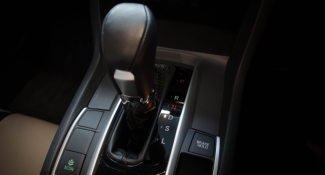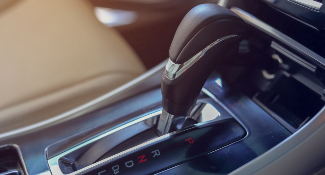When buying a car, there are a lot of things that you should be considering. Factors like engine type, included tech, and safety features are all important considerations. However, the type of transmission that a vehicle has is equally important and should be a big part of your decision-making process. Choosing the right transmission will influence how your vehicle runs and how reliable it will be in the years to come.
While some vehicles are still made with manual transmissions, the most common types are automatic transmissions or continuously variable transmissions, also called CVTs. Automatic transmissions use gears to transfer the power from the engine to the wheels, while a CVT uses pulleys and belts to create the perfect ratio for every particular driving situation. Modern automakers like Honda and Toyota use both CVT transmissions and automatics in new cars, so it is important to know which one is best for you and how you can benefit from them.
Difference Between a CVT and an Automatic Transmission
When deciding between a vehicle with a standard automatic transmission and a CVT, it is important to understand how they are different. Essentially, an automatic transmission uses between three and ten gears to create the perfect engine speed in relation to the vehicle speed. By switching the set number of gears automatically, the transmission sets the speed of the car’s engine to make sure it doesn’t get to higher RPMs that could cause damage. This helps the vehicle produce the optimal amount of horsepower and keeps the engine in good condition by not overworking it.
A vehicle with a CVT does the same thing but it does not have gears like a regular automatic transmission does. Instead, it uses a series of pulleys and belts that move up and down a pair of pulleys in the transmission to create an infinite number of gear ratios. A CVT automatic still does this without any input from the driver but it can ensure that the car is always running at peak efficiency since there are no spaces in between the gear ratios like there are with a traditional automatic transmission.
How Does an Automatic Transmission Work?
A conventional automatic transmission works by using a torque converter that is attached to the engine to push transmission fluid, which transfers power to the set of gears. Because of this, the driver does not need to press the clutch when the car comes to a stop. The transmission measures things like the speed of the vehicle as well as the RPM of the wheels to determine what gear ratio to use. Using a hydraulic system, the transmission moves the gears into place so the engine can operate at the right RPM.
How Does a CVT Work?
A CVT works very much in the same way that a bicycle drivetrain works. The transmission has two opposing, cone-shaped pulleys that are connected by bands. These bands move up and down the pulleys to create the ideal gear ratio for every possible speed. With one cone attached to the engine and the other attached to the wheels, the position of the bands determines the ratio between the two pulleys. Because there are no set gear ratios within the transmission, a CVT will always be at the optimal ratio, which has many benefits for both you and your vehicle.
Pros and Cons of CVT and Automatic Transmissions
Before you can decide that a new or used car is right for you, it is important to know the pros and cons of each transmission type. Most modern vehicles will have either a CVT or automatic, so having a good knowledge of the benefits and drawbacks can help you narrow down your search. Choosing wisely and making an educated decision will allow you to make an informed purchase that will serve you well for many years and keep the overall cost of owning your car to a minimum.
Pros and Cons of an Automatic Transmission
Pros
- Better Driving Experience
One of the biggest benefits of an automatic transmission is the fact that so many people find that they provide a much better experience behind the wheel. Because you can feel the upshifts and downshifts, you get a much more connected feeling with the vehicle. This is especially helpful if you are driving a large SUV or are taking your vehicle off-road. Any time you can get the exciting feeling of gear shifts and know where your vehicle is at when it comes to the RPM, you will feel much more comfortable behind the wheel. Your car will also be a lot more fun to drive.
- Cheap to Repair
Transmission repair is one of the things that car owners dread the most. In general, a problem with your transmission will be one of the most expensive issues you will run into. However, if you have an automatic conventional transmission, you can count on the repairs being a lot cheaper than you would if you had a CVT. This is because the gears are easier to replace and the whole mechanism is a lot simpler. In fact, if you have a CVT, you may have to find a specialized transmission service with service technicians who are experienced in these types of automatic transmissions, which can cost a lot of money.
Cons
- More Emissions
When you are working with a series of set gear ratios within traditional transmissions, there is always going to be some amount of efficiency that gets lost. Because you will only have a three-, four-, or even nine-speed automatic transmission, your engine may not always be working at the optimal RPM for the speed that the vehicle is going. This will increase the emissions that are put out by the vehicle and make it less eco-friendly than a vehicle that has a CVT. If this is a concern of yours, you should consider going with a continuously variable transmission, which will always be running at the optimal RPM for the conditions.
- Lower Fuel Efficiency
This same principle of having limited gear ratios will also reduce the fuel efficiency of the vehicle. With a CVT, the gear ratio is always going to be the most efficient use of the engine’s power depending on the speed of the vehicle. With an automatic, though, the optimal gear ratio may be somewhere between the gears that are in the transmission. This can lower the MPG of the vehicle and end up costing you a lot more in fuel over the years.
Pros and Cons of a CVT
Pros
- Smoother Operation
One of the things that people love about vehicles with CVTs is the fact that they run so smoothly. Because the band moves around the cone-shaped pulleys automatically, you will not feel the gear shifts as you will with an automatic transmission. This can result in a smoother ride and less movement within the vehicle’s cabin. If you are someone who regularly goes on road trips or commutes long distances, this could make driving a lot more comfortable for you.
- Cheaper Operation
Perhaps the most important benefit of having a vehicle with a CVT is the fact that it can get you superior fuel economy. There are no empty spaces between gear ratios like there are with an automatic, which means a CVT will always be operating at the optimal RPM for the driving conditions. This will get you better fuel efficiency and be a lot easier on your engine. Both of these things will result in less money spent on your car over the years.
Cons
- Costly Repairs
Should something go wrong with your vehicle’s CVT, you could be looking at some incredibly costly repairs. Continuously variable transmissions are incredibly complex and require technicians with specialized knowledge, who can be expensive to hire. While transmission repair is already incredibly costly, a CVT will cost even more and an issue could potentially be enough to total the vehicle.
- Noisy
One of the most common complaints about continuously variable transmissions is the droning sound that they produce, especially while at speed. Because of the band and pulley system, CVTs produce a consistent drone that can be irritating if you are driving for long periods of time. This is why it is so important to test drive any vehicle you are thinking of purchasing at the dealership. Also, read reviews from people who have owned a vehicle in the past so you can find out if the drone is an issue.
CVT vs. Automatic Transmission - Which is Better?
The question of whether a CVT or automatic transmission is better will be entirely up to who you are as a driver and what your needs are. If, for example, fuel economy is important to you, a CVT is going to be your best bet because it will give you the best possible fuel efficiency for the make and model of your vehicle. If, however, you want a more exciting driving experience, an automatic transmission may be your best bet since it will have an engaging, connected feel that a lot of people love.
When choosing between a CVT or automatic transmission, you have to think about the total cost of ownership for the car. While a CVT will give you better gas mileage, it will also be more expensive to fix should an issue arise. If you are someone who takes great care of your vehicle, this may not be a problem but you never know when a transmission problem can occur, and any malfunction can be incredibly expensive to fix if you have a CVT. Weighing your options and having a good understanding of what kind of car owner you are will help you make the best decision.
Final Thoughts
There are so many things to consider when buying a car but the type of transmission should be one of your biggest concerns. This important component will determine how your vehicle runs and how expensive it will be to own. By knowing the differences between automatic transmissions and CVTs, you can make an informed decision at the dealership and drive away confident that your new car will serve you well for many years to come.


